
Cost of Applicant Tracking System: Book Free Demo for ATS Average Costs in 2025
Author: Hi, I'm Shivam Gupta, an experienced authority in HR technology and recruitment optimization with over a decade of experience transforming talent acquisition processes across the global market. Also, we are running another software development brand, Appsierra.
Cost of Applicant Tracking System: Your 2025 Guide to Pricing, Value, and Total Ownership
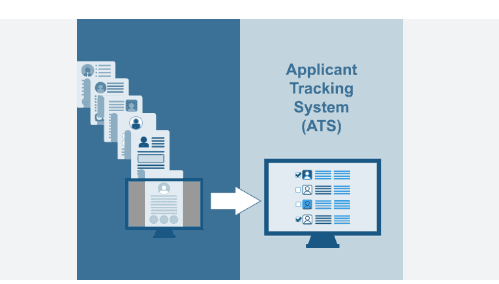
Are you wondering about the applicant tracking system pricing or searching for the average cost of applicant tracking system solutions in 2025? You're not alone! With more companies updating their recruitment tech and applicants flooding the job market, finding the best value ATS software pricing—and understanding the true ATS Cost pricing—matters now more than ever ats software uk.
In this post, we'll break down everything you need to know: from basic ATS pricing models and real-world examples, to the true "total cost of ownership" and powerful ATS pricing negotiation tips. Plus, we'll dive deeper into game-changing topics like security, migration, scalability, and ATS integration, and incur additional fees—areas most blogs skip over entirely when discussing the ATS cost ats systems uk.
Let's jump in!
💡 Quick Note: If you're ready to transform your hiring process, Pitch N Hire offers an AI-powered ATS & Interview Automation Platform to streamline recruitment, cut time-to-hire, and deliver top talent faster. Book your free demo here and see the difference in action.
Explore the best ATS software solutions for recruiters in 2025: Best Applicant Tracking System
What Is an Applicant Tracking System (ATS)?
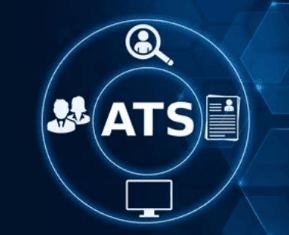
An applicant tracking system (ATS) is a software platform designed to simplify and automate the hiring process. Think of it as your team's digital command center for tracking applicants, streamlining workflows, and reducing manual recruiting tasks. ATS helps recruiters post jobs, collect resumes, screen candidates, schedule interviews, and keep everything organized—and efficient best applicant tracking system uk.
ATS Benefits for Businesses
- Reduces manual work for recruiters
- Speeds time-to-hire by automating key steps
- Centralizes candidate data and communication
- Enables better reporting and compliance
- Improves candidate experience recruitment ats systems uk
Need a better way to track applicants? This ATS software is a game-changer: Best ATS software
How Much Does an Applicant Tracking System Cost? Understanding the ATS Budget in 2025
One of the most common questions recruiters ask is: How much does an applicant tracking system cost? The answer depends on multiple factors, including company size, hiring software cost requirements, and desired features. Understanding the cost of applicant tracking system software requires examining several ATS pricing models and considering both visible and hidden expenses.
When evaluating how much ATS software costs, businesses must factor in the ATS monthly cost or ATS annual cost, along with ATS implementation cost and fees. The recruitment software cost landscape varies dramatically, from free ATS software options to premium enterprise solutions exceeding six figures annually uk talent acquisition platform.
Cost of Applicant Tracking System: Pricing Models and What to Expect

When researching the ATS cost software, understanding applicant tracking system pricing models is key. Each model caters to different business sizes, needs, and hiring volumes. The ATS software pricing varies significantly based on these factors, affecting your overall ATS budget and HR software cost allocation.
ATS Pricing Models Explained
Flat Rate ATS Pricing Models
Flat rate ATS pricing models charge a single monthly or annual fee, regardless of user count or active vacancies. These packages usually fit larger businesses, offering all-in-one access for unlimited users and jobs. This ATS price structure provides predictability for your recruiting platform pricing budget.
Example: A fast-growing company with hundreds of job postings may pay $1,000/month for unlimited access and features applicant tracking systems uk.
Pay Per User (ATS Cost Per User)
This model is ideal for small teams. You're billed for every individual using the system—recruiters, HR, or hiring managers—with the ATS cost per user ranging from $60–$100 per user per month. Understanding the applicant tracking system cost per user helps small teams manage their budget-friendly ATS solutions effectively.
Example: A startup with three recruiters pays $180–$300/month for basic ATS access, making this an affordable ATS software option for smaller organizations.
Pay Per Vacancy (Pay Per Job ATS Pricing)
If your hiring needs fluctuate, pay-per-job ATS pricing may suit you. Costs are based on the number of job ads posted, often $100–$500 per active job slot monthly. This hiring platform's cost model offers flexibility for seasonal hiring applicant tracking system software uk.
Example: A boutique agency with five open roles pays $500–$2,500/month applicant tracking software uk.
Pay Per Module
Companies needing advanced features (like onboarding or performance management) add modules to a base ATS. Each module incurs a separate fee, creating a custom package that affects the overall ATS software cost.
Example: You add a CRM, onboarding, and analytics integrations—each raising your monthly bill by $20–$75 application tracking system uk.
To learn more about the pricing of the ATS, click here: ATS Software Price
Average Cost of Applicant Tracking System: Benchmarks by Business Size
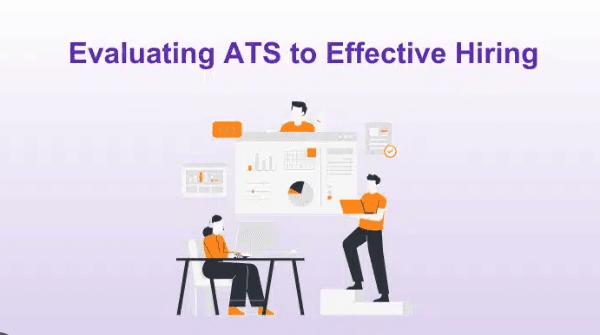
Let's examine the average cost of ATS software and typical ATS software pricing in 2025 across different business scenarios. Understanding the ATS cost breakdown by company size is crucial for budget planning and finding the best budget ATS software for your needs applicant tracking system uk.
Small Business ATS Cost (<100 employees)
Applicant tracking system cost for small business considerations:
- Price Range: $250–$3,000 per year
- Common Model: ATS per employee cost or pay per vacancy
- Features Needed: Resume parsing, job posting, basic integrations, notes
- Best Options: Cheap ATS software or the most affordable ATS solutions 2025
When evaluating ATS for small business cost, startups should explore free applicant tracking system software options first, then compare free vs paid ATS cost to determine if premium features justify the applicant tracking system cost for startups
.
Medium-Sized Business (100–500 employees)
ATS cost for medium-sized business analysis:
- Price Range: $3,000–$15,000 per year
- Models: Combo of flat rate pricing or ATS pricing per recruiter per month for flexibility
- Features Needed: Custom workflows, compliance, analytics, branded experience
- Typical Cost: Applicant tracking system monthly subscription cost of $250–$1,250/month
Large Business (500–5,000 employees)
- Price Range: $15,000–$50,000+ per year
- Common Model: Flat rate pricing or custom pricing (often bundles)
- Features Needed: High-volume integrations, advanced reporting, support
- Annual Investment: Applicant tracking system annual subscription cost becomes significant
Enterprise (5,000+ employees)
Applicant tracking system pricing for enterprises considerations:
- Price Range: ATS cost for a large enterprise can exceed $125,000+ per year
- Models: Multi-year contract, unlimited everything best ats systems uk
- Features: Global workflows, security, advanced compliance, premium support
If you want to learn more about the Average cost of an applicant tracking system, read our article: Average cost of an applicant tracking system
What's Included—and What's Hidden—in ATS Pricing?
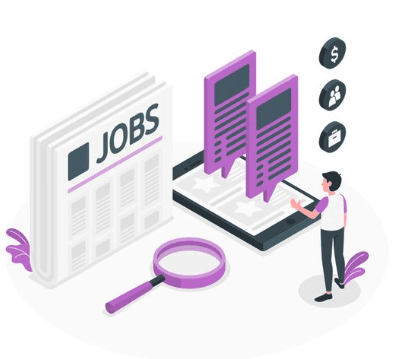
Many blogs discuss subscription fees, but understanding the hidden costs of applicant tracking systems can significantly impact your ATS cost estimate and overall recruiting software pricing budget. Let's break down both visible and hidden expenses.
Visible Costs
- Base subscription (ATS monthly cost or ATS annual cost)
- Add-on modules
- Premium support plans uk applicant tracking system
Hidden or Additional Fees
Setup and Onboarding
You may pay $500–$2,000 for system setup, training, and ATS implementation costs and fees.
Training and Certification
Continuous staff training or certifications sometimes incur extra costs, especially for mid-sized and enterprise-level applicant tracking system pricing for enterprise plans.
ATS Integration Cost Additional Fees
Integrations with HRIS, payroll, background check, or assessment tools can cost $20–$75/month per integration. These additional ATS integration costs additional fees are often overlooked in initial ATS cost calculator estimates ats software uk.
Support and Service
Want priority support or dedicated account management? That's typically $100–$400/month extra, affecting your how much does recruiting software cost calculation.
Usage Overages
Exceeding candidate limits, job openings, or user caps may trigger additional charges that increase your overall ATS software cost beyond the initial ATS price range quoted ats systems uk.
Hiring made simple — this is the best ATS software I've come across: top ATS system
Negotiating Your ATS Pricing Like a Pro
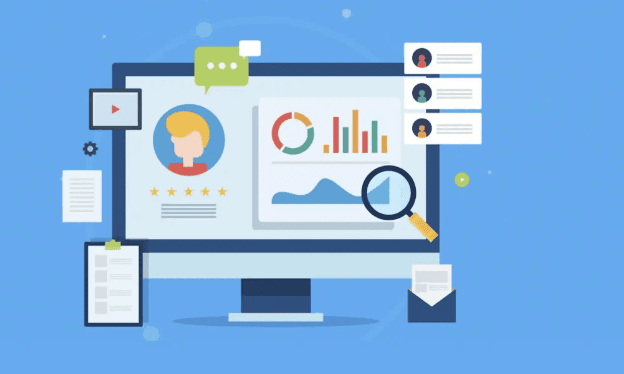
Securing the best ATS price isn't just about comparing plans—it's about asking the right questions and pushing for value when evaluating the ATS tracking price options. Effective ATS pricing negotiation tips can save thousands annually.
Actionable Tips for Best ATS Pricing
- Benchmark at least three vendors for a thorough ATS pricing comparison
- Ask for multi-year discounts or annual pre-payment deals on the applicant tracking system annual subscription cost
- Don't pay for features you won't use: request custom quotes for affordable hiring software pricing
- Clarify contract minimums, cancellation terms, and renewal clauses
- Insist on a detailed breakdown using an applicant tracking system cost calculator
- Compare ATS cost vs features comparison across vendors
- Research the cheapest applicant tracking system software without sacrificing quality
- Evaluate the best free applicant tracking system software options first
ATS Pricing Comparison: Finding Budget-Friendly Solutions
When conducting your recruiting software pricing research, consider these budget-friendly ATS solutions strategies:
Low-Cost Applicant Tracking System Options
Low-cost applicant tracking system solutions don't necessarily mean compromising on quality. The best cheap ATS software 2025 offerings include robust features at competitive prices. When evaluating affordable ATS software vendors, focus on:
- Core functionality vs. nice-to-have features
- ATS pricing for team scalability
- Applicant tracking system cost per employee efficiency
- Long-term ATS budget sustainability
Free ATS Software Considerations
While free ATS software can work for very small teams, the free vs paid ATS comparison cost analysis often reveals limitations in:
- Candidate volume restrictions
- Limited integrations
- Basic reporting capabilities
- Minimal customer support
Many companies find that cheap ATS software in the $50-100/month range offers significantly better value than completely free options, making them the best budget ATS software choice.
Advanced Insights: Total Cost of Ownership and Unspoken Fees

While headline figures matter, the true applicant tracking system cost is bigger than your recurring bill. A comprehensive applicant tracking system cost analysis must include these critical factors often missed in basic ATS software pricing guide 2025 resources.
Migration and Switching Costs
How to reduce ATS software costs starts with understanding switching expenses:
- Legacy Data Transfer: Migrating candidate histories, interview data, and notes may cost thousands or require time-intensive manual effort
- Workflow Rebuilding: Custom workflows and automation templates often need recreation—unless packaged as a service
Security, Data Privacy, and Compliance
- Compliance Upgrades: Adapting to new regulations (like GDPR) can lead to surprise fees and audits
- Security Audits: Periodic external testing is recommended, but rarely included—budget for $300–$5,000/year in your ATS cost estimate
Customization and Scalability
- Custom Development: Unique reporting or custom integrations often require separate contracts or hourly billing, affecting how much an applicant tracking system costs long-term
- Growth Penalties: As your team or hiring needs scale, moving to a higher ATS tier often jumps your applicant tracking system monthly subscription cost considerably
Integration Ecosystem Costs
- Third-Party Connections: Connecting with external APIs or tools (for assessments, benefits, background checks) may trigger ongoing ATS integration and incur additional fees
- Maintenance Charges: Keeping apps synced, updated, and compliant adds small but perpetual costs to your hiring software costs
Downside Protection
- Contract "Traps": Understand cancellation policies, auto-renewal terms, and support offboarding processes when evaluating applicant tracking system price proposals
Maximizing ATS Value: ROI and Soft Savings
ATS investments can deliver a transformative applicant tracking system ROI cost benefit. Here's how to maximize results while managing your ATS tracking price and achieving the best value ATS software pricing:
Actionable Ways to Boost ROI
- Use automation to free up recruiter time for strategic work
- Tap analytics and reporting to optimize your recruiting funnel
- Reduce cost-per-hire by streamlining candidate evaluation through affordable ATS software
- Use built-in compliance tools to sidestep fines or audit risks
- Integrate referral management to lower external recruiting platform pricing dependencies
Real-World Example
A mid-sized tech company used ATS candidate scoring and screening automation to reduce average time-to-hire by 36%, saving $21,000 in recruiter payroll last year alone. This applicant tracking system ROI cost benefit significantly offsets their average cost of applicant tracking system investment, demonstrating why the best ATS for budget isn't always the cheapest option.
Frequently Asked Questions (FAQ)
What is the average cost of applicant tracking system software?
The average cost of ATS software varies by company size:
- Small businesses: $250–$3,000/year (applicant tracking system cost for small businesses)
- Medium companies: $3,000–$15,000/year
- Large organizations: $15,000–$50,000/year
- Enterprises: $125,000+/year
The cost of your applicant tracking system depends on user count, volume, modules, and contract terms.
How much does an applicant tracking system cost for different business sizes?
How much an applicant tracking system costs depends heavily on scale. Applicant tracking system cost for startups might be just $20-50/month for free ATS software or basic plans, while ATS cost for large enterprise implementations requires substantial investment in the six figures annually.
What factors impact ATS pricing the most?
Key drivers affecting how much ATS software costs include:
- Business size and ATS per employee cost calculations
- Number of users and ATS cost per user requirements
- Active job postings and pay per job ATS pricing needs
- Feature set and ATS pricing models selected
- Required ATS integration costs additional fees
- Support level included in the hiring platform cost
- Contract length and ATS pricing negotiation tips applied
Are there any hidden fees in ATS contracts?
Yes. Common hidden costs of applicant tracking systems include:
- ATS implementation cost and fees for setup/training
- Premium training/support beyond basic packages
- ATS integration costs additional fees for third-party connections
- Overages for extra jobs or candidates
- Compliance updates and security audits
- Contract minimums and renewal penalties
Always use an applicant tracking system cost calculator to project total expenses.
How can I negotiate better ATS pricing?
Effective ATS pricing negotiation tips include:
- Compare multiple vendors using ATS pricing comparison tools
- Request only the needed features for affordable hiring software pricing
- Ask for multi-year or upfront discounts on the applicant tracking system annual subscription cost
- Clarify all extra fees beyond the base applicant tracking system price
- Consider yearly contracts for the best rates
- Research the cheapest applicant tracking system software benchmarks
- Evaluate the ATS cost vs features comparison carefully
What is the total cost of ownership (TCO) for ATS software?
TCO includes initial applicant tracking system pricing, configuration, migration, support, ATS integration cost additional fees, compliance expenses, contract fees, lost productivity during transition, and charges for upgrading/scaling. This comprehensive applicant tracking system cost analysis provides the true cost of applicant tracking system ownership.
What are the best budget-friendly ATS options?
The best budget ATS software and most affordable ATS solutions 2025 balance cost with functionality. Consider:
- Best free applicant tracking system software for very small teams
- Cheap ATS software options ($50-200/month) for growing companies
- Low-cost applicant tracking system solutions with essential features
- Budget-friendly ATS solutions with transparent ATS pricing for teams
Review our ATS software pricing guide 2025 for detailed vendor comparisons.
How do I calculate the applicant tracking system cost per employee?
Calculate the applicant tracking system cost per employee by dividing your total annual ATS cost (including all fees) by your employee count. Similarly, the applicant tracking system cost per user divides the total cost by active system users. These metrics help evaluate ATS budget efficiency.
What's the difference between free vs paid ATS?
The free vs paid ATS comparison cost reveals key differences:
Free ATS Software:
- Limited candidate volume
- Basic features only
- Minimal integrations
- Community support
Paid/Affordable ATS Software:
- Unlimited candidates
- Advanced automation
- Extensive integrations
- Premium support
Most companies find that cheap ATS software ($50-100/month) offers better value than completely free ATS software options.
How much does recruiting software cost compared to ATS?
How much does recruiting software cost depends on the scope. Full recruiting platforms may include ATS plus CRM, onboarding, and analytics, increasing the recruitment software cost by 50-200% compared to a standalone ATS. Compare recruiting platform pricing vs basic ATS software pricing to understand the difference.
If you want to learn more about ATS, Click Here: Applicant tracking system ats software
Conclusion: Making Smart ATS Investment Decisions

Choosing an applicant tracking system is a major business decision—and the cost of applicant tracking system software is much more than just your subscription fee. By factoring in all visible, hidden costs of applicant tracking systems and advanced fees, you'll make a smarter, more strategic investment. The average cost of applicant tracking system solutions varies widely—but so does the value you get.
Remember to ask tough questions about ATS pricing models, insist on transparency, compare multiple vendors using ATS pricing comparison tools, and don't underestimate the importance of migration, security, customization, and long-term scalability when evaluating applicant tracking system pricing. Whether you're looking for the best cheap ATS software 2025, affordable ATS software, or enterprise solutions, understanding typical ATS software pricing 2025 trends helps you negotiate better deals.
With effective ATS pricing negotiation tips and thorough applicant tracking system cost analysis, your ATS investment will deliver a strong applicant tracking system ROI cost benefit. The right budget-friendly ATS solutions will save money, free up time, and ensure your team hires better—fast—while providing excellent value for your cost of applicant tracking system investment.
Start your search today by comparing ATS software cost options, using an applicant tracking system cost calculator, and evaluating the best value ATS software pricing available in 2025. Whether you need ATS for small business cost solutions or ATS cost for large enterprise platforms, understanding the cost of applicant tracking system software empowers better decisions.
